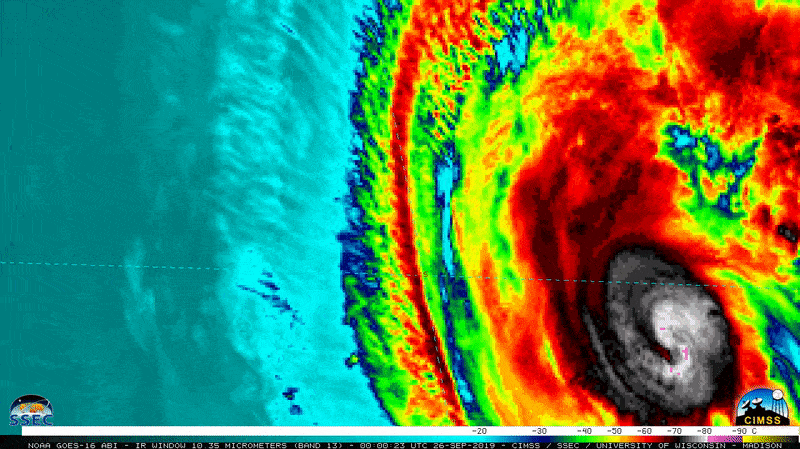When you buy through links on our site , we may garner an affiliate commission . Here ’s how it works .
Hurricane Maria’s Raging Intensity
Hurricane Maria developed into a Category 5 tempest for a 2d metre on Sept. 19 , the sunrise after it made landfall over the Caribbean island of Dominica . The tempest weaken to a Category 4 after nominate landfall but quick regained intensity level once it moved back over the warm ocean urine . This view of the hurricane was acquire by the GOES-16 satellite , which is run byNASAand the National Oceanic and Atmospheric Administration ( NOAA ) .
Frigid Cloud Tops
On Sept. 19 at 2:15 a.m. EDT ( 0615 UTC ) , the Moderate Resolution Imaging Spectroradiometer ( MODIS ) instrument aboard NASA ’s Aqua satellite appraise the temperatures of Hurricane Maria ’s cloud top side . The data point showed temperatures consistent with solid thunderstorms in Maria ’s eyewall at about minus 80 arcdegree Fahrenheit ( minus 62.2 Anders Celsius ) .
Hurricane Maria
The massive Category 5 storm churn across the Caribbean Sea on Sept. 19 . NOAA ’s GOES East satellite charm this visible - Light Within range of a function at 11 ante meridiem EDT ( 1500 GMT ) .
Warnings
On Sept. 19 , the NOAA issue a tropical - violent storm - force wind advisory that would remain in consequence through Sept. 24 .
Another Season
NOAA ’s GOES-16 capture this geocolor image of Hurricanes Jose and Maria and Tropical Depression Lee simultaneously churn through the Atlantic Ocean on Sept. 18 .
Maria Approaches the Caribbean
This figure of speech of Hurricane Maria was taken by NOAA ’s GOES East artificial satellite on Sept. 18 at 10:45 ante meridiem EDT ( 1445 GMT ) as it strengthen to a Category 3 hurricane just east of the Leeward Islands . Hurricane Maria made landfall on the Caribbean island of Dominica as a family 5 storm later that day at 9:15 p.m. EDT ( 0115 GMT on Sept. 19 ) .
Maria’s Projected Path
This computer graphic show area dissemble by Hurricane Maria , and the expected dates and time when the violent storm will make it at those locations . The NOAA released this forecast on Sept. 18 at 5 p.m. EDT ( 2100 GMT ) .
Stormy Seas
At a class 1 violent storm , Hurricane Maria trekked across the Caribbean Sea toward the Leeward Islands in this move artificial satellite epitome take on Sept. 18 .
Impressive Height
On Sept. 18 , NASA ’s Global Precipitation Measurement ( GPM ) planet appraise Hurricane Maria ’s cellphone at an impose 10.41 miles ( 16.75 kilometer ) altitude , stretching into the lower stratosphere .
A View from GOES-13
Hurricane Maria is seen by NOAA ’s GOES-13 satellite ( also known as GOES East ) as the tempest was locate about 60 stat mi east of Martinique and moving toward the west - northwest near 10 mph on Sept. 18 at 11 a.m. EDT . At the fourth dimension , Maria was a Category 3 hurricane . It later tone up to a Category 5 .
Gaining Strength
NASA ’s GOES - East satellite enamor this view of Hurricane Maria on Sept. 18 as the family 3 violent storm quickly evolved into a Category 5 .






























